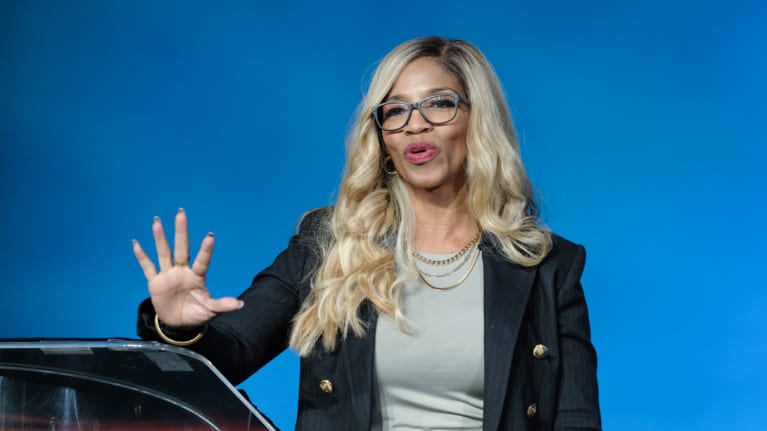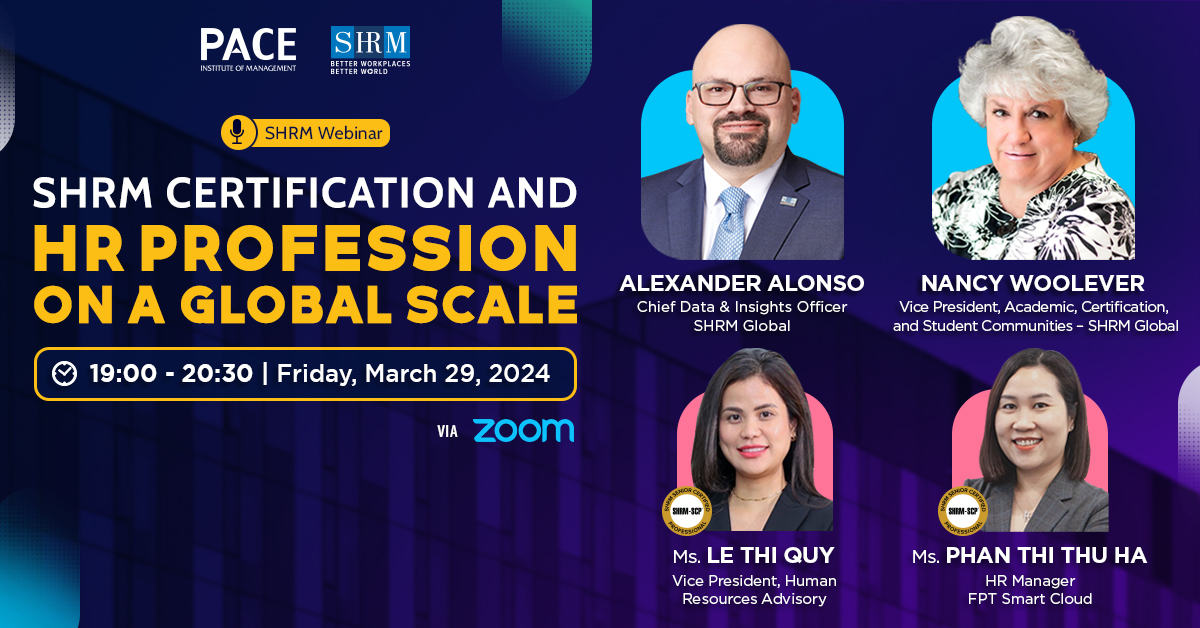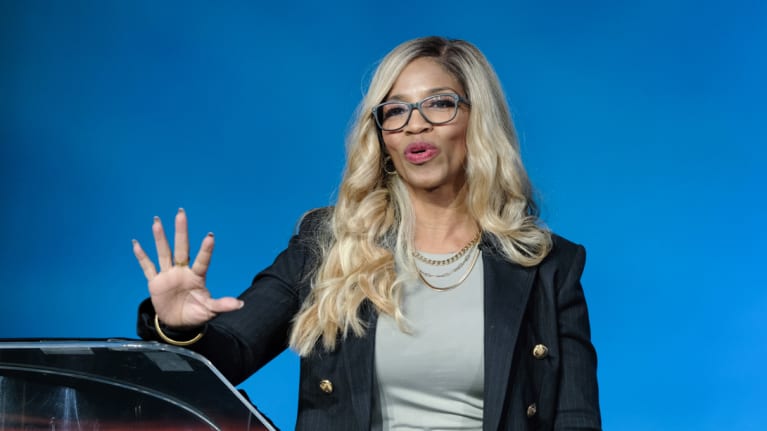HOW HR LEADERS CAN CREATE EMPATHETIC WORKPLACES

April Simpkins, SHRM-CP, CHRO at Total HR, speaks during a Nov. 18 general session
at the SHRM Volunteer Leaders’ Business Meeting 2022.
(Photo by Chris Williams).
at the SHRM Volunteer Leaders’ Business Meeting 2022.
(Photo by Chris Williams).
Afew years ago, April Simpkins, SHRM-CP, CHRO at Total HR in Greenville, S.C., hired an assistant. She had only been in the role for a few weeks when Simpkins noticed something was a little off.
Simpkins turned away from her computer, sat with her assistant for a moment and said, "I can tell something is not OK, and if you want to talk about it, I'm here to listen—whether you want to talk about it now or a little bit later. Whatever is comfortable for you, I'm here to listen." Her assistant immediately began to cry.
The assistant was going through a stressful divorce after a couple decades of marriage. She was worried about her finances, her children and what her life was going to look like. "In that moment, nothing else mattered to me but her and making sure she was OK," Simpkins said.
Simpkins told her assistant—though they had only known each other a few weeks—that she could feel her pain, giving her room to "just be human." Sharing that kindness unlocked a shared bond of empathy that would come full circle.
That same assistant went on to become the director of human resources, and she became an advocate for Simpkins during the most challenging time of her life—the loss of her daughter, former Miss USA, attorney and TV correspondent Cheslie Kryst, in 2022.
Simpkins shared this heartfelt anecdote with an audience of hundreds of SHRM volunteer leaders during a Nov. 18 general session, "Empathy—A Successful Leader's Most Critical Trait," at the SHRM Volunteer Leaders' Business Meeting 2022. Being an advocate, like her assistant had been when Simpkins needed it most, is one of many ways in which HR professionals and people managers can lead with empathy in their organizations.
Leading with Empathy
Cognitive empathy is often baked into an HR leader's job: sitting through conflict resolution sessions, understanding where employees are coming from and charting a path forward. Emotional empathy goes a step further; it involves connecting with others on an emotional level and feeling what they are feeling.
Putting empathy into practice can take work, though, so Simpkins shared some tips for leading with empathy:
Putting empathy into practice can take work, though, so Simpkins shared some tips for leading with empathy:
- Listen without judgment. Even when your priorities list is robust and a colleague's concerns may seem inconsequential, be sure to give your full attention. Avoid conveying via body language that your problems are bigger than a colleague's problems.
- Be transparent in your communication. Avoid the knee-jerk reaction to always respond with "fine" when asked how you are doing. Being open and honest about how you are doing may encourage colleagues to open up about their own struggles.
- Advocate for others. Work within your organization to create a culture that makes it OK to not be OK—and ensure that this is reflected in the company's policies and messaging from leadership.
Simpkins asked attendees to think about a time when they had held back from honestly answering a query like "How are you doing?" What caused them to avoid being transparent with their colleagues? Inspecting those reasons can help HR leaders break down their own empathy gaps, she shared.
Creating a Safe Space
Feeling the lack of a safe space at work can be caused by many of the reasons attendees had shared: a lack of trust between co-workers, not wanting others to think that they are weak or vulnerable, having to put on a brave face as a leader. To dismantle those issues—and to create a safe space at work—change must come from the top.
"Culture is established by senior-most persons, and when you value your mental health—when you make it a priority and say it out loud—others will follow," Simpkins said, "because you have proven that that is accepted and expected amongst your team."
It is easier to champion a culture that makes it OK to not be OK when you know what resources are available in your workplace and when utilization of those resources is normalized. "Creating a space where others feel seen, heard, valued and safe is key to workforce retention, engagement, innovation and inclusivity," said Mary Cheddie, SHRM-SCP, SHRM's divisional director, East, in her introductory remarks at the general session.
HR leaders should also practice kindness in words and actions "because we don't know many times what someone else is going through," Simpkins said.
"Culture is established by senior-most persons, and when you value your mental health—when you make it a priority and say it out loud—others will follow," Simpkins said, "because you have proven that that is accepted and expected amongst your team."
It is easier to champion a culture that makes it OK to not be OK when you know what resources are available in your workplace and when utilization of those resources is normalized. "Creating a space where others feel seen, heard, valued and safe is key to workforce retention, engagement, innovation and inclusivity," said Mary Cheddie, SHRM-SCP, SHRM's divisional director, East, in her introductory remarks at the general session.
HR leaders should also practice kindness in words and actions "because we don't know many times what someone else is going through," Simpkins said.
Taking Care of Mental Health
It is also key to put a premium on mental health and wellness, Simpkins said. There are a few ways HR leaders can take care of their own mental health, and they can use these tips as a model for establishing mental wellness in their organization:
- See a counselor/therapist. "It carries such a stigma, and I don't know why," Simpkins said. HR leaders should actively champion counseling as a standard part of mental wellness.
- Move your body. "Sometimes this is hard to do when we are sitting at a desk all the time, but the process of just moving your body really does things for your mental health," she said.
- Get sleep. "When I hear people say, 'I pulled an all-nighter,' I honestly feel empathy that they had to do that," Simpkins said. "We need to not glorify that. Getting sleep is vital."
- Get fresh air. "Something happens when you go outside and just take a deep breath," she said. It really does make a difference to go outside.
- Practice good nutrition. Healthy foods have many positive effects on brain chemistry and mental health, studies show.
- Be kind to yourself. Simpkins shared that her company asks employees to write a note to themselves during orientation that starts with, "If I had one day off to do anything I wanted to do, what would I do?" The notes are placed in envelopes and sealed, and after employees have been with the company for six months, the notes are given back and the employees are encouraged to take the day off and go do that thing. "That is us as an employer creating a space where it is OK to be kind to yourself," she said.
shrm.org










